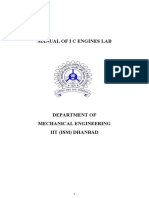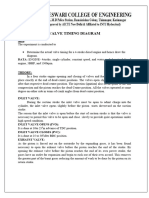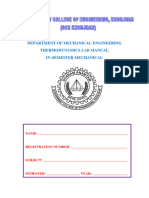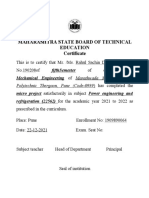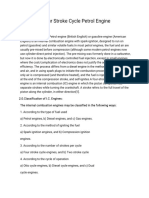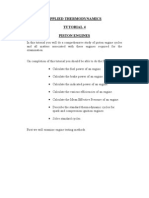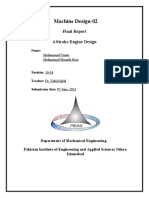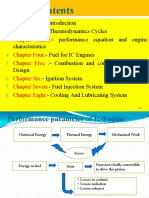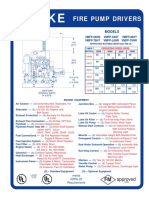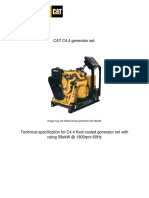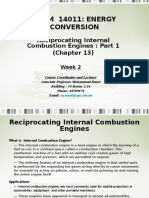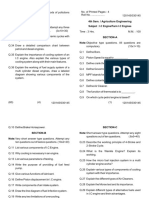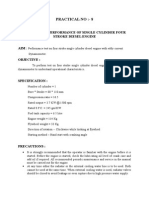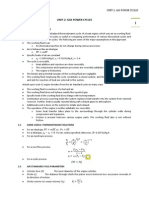0% found this document useful (0 votes)
194 views5 pagesExperiment 17: Objective
The document describes an experiment to determine the fuel consumption rate of a single cylinder 4-stroke diesel engine. The apparatus used includes the diesel engine, a tachometer, stopwatch, and graduated fuel measuring bottle assembly. The procedure involves running the engine at different speeds, measuring the fuel consumed over a set time period, and calculating the fuel consumption rate in liters/hour and kg/hour. The results show that the fuel consumption rate increases with increasing engine speed.
Uploaded by
Abdullah KhanCopyright
© © All Rights Reserved
We take content rights seriously. If you suspect this is your content, claim it here.
Available Formats
Download as PDF, TXT or read online on Scribd
0% found this document useful (0 votes)
194 views5 pagesExperiment 17: Objective
The document describes an experiment to determine the fuel consumption rate of a single cylinder 4-stroke diesel engine. The apparatus used includes the diesel engine, a tachometer, stopwatch, and graduated fuel measuring bottle assembly. The procedure involves running the engine at different speeds, measuring the fuel consumed over a set time period, and calculating the fuel consumption rate in liters/hour and kg/hour. The results show that the fuel consumption rate increases with increasing engine speed.
Uploaded by
Abdullah KhanCopyright
© © All Rights Reserved
We take content rights seriously. If you suspect this is your content, claim it here.
Available Formats
Download as PDF, TXT or read online on Scribd
/ 5
















